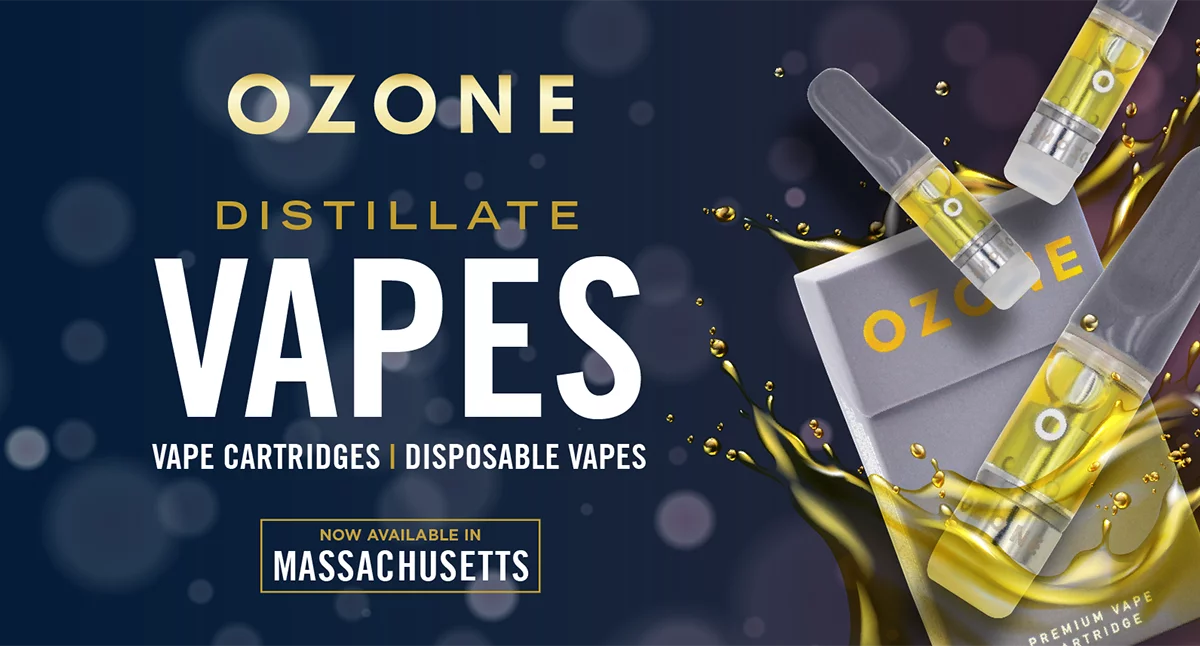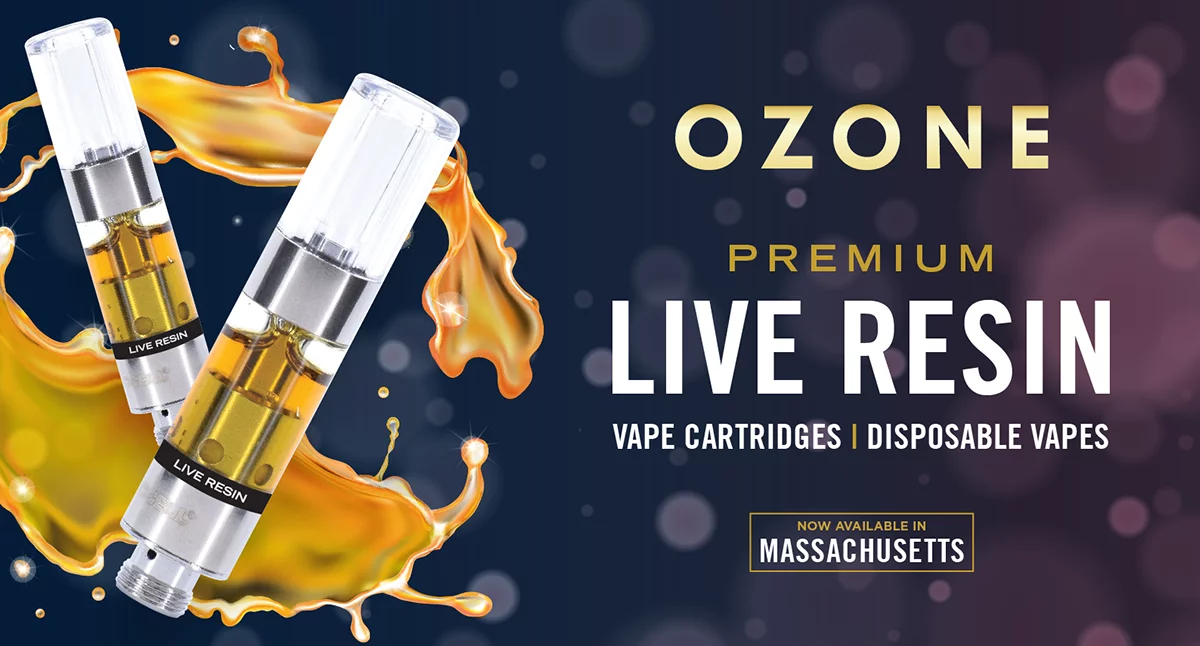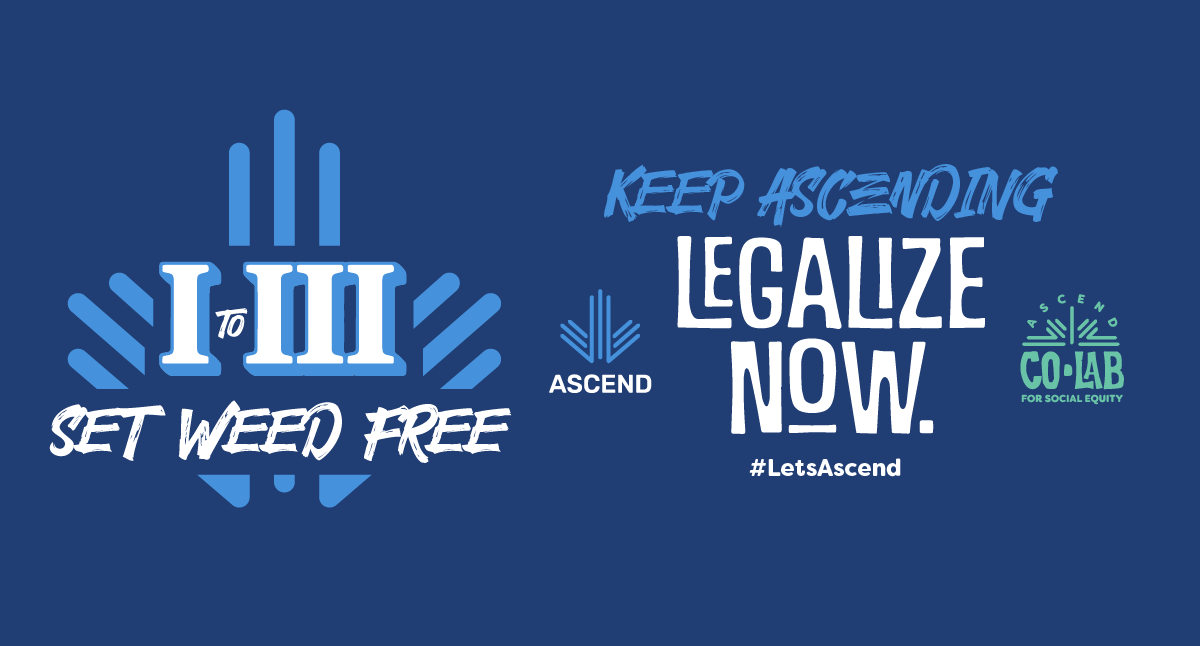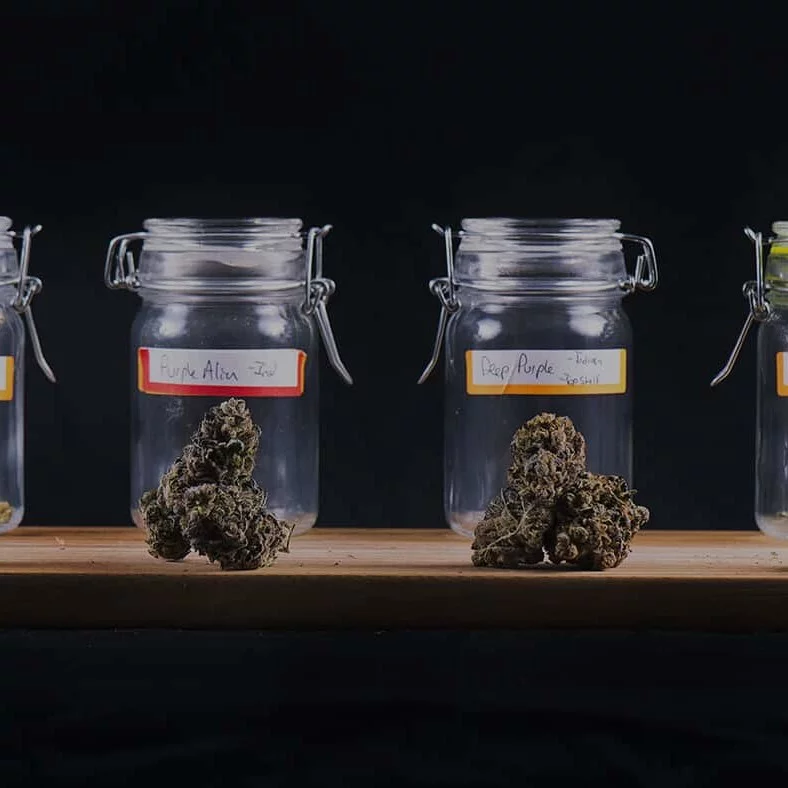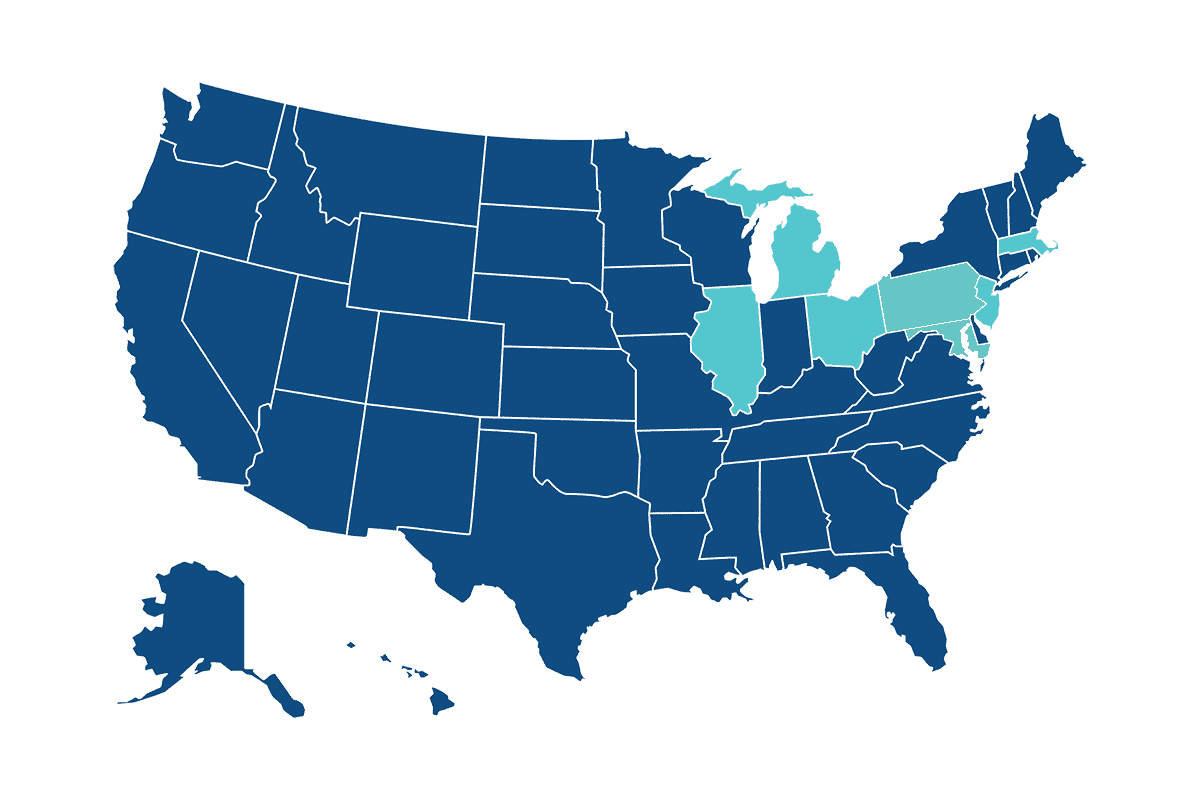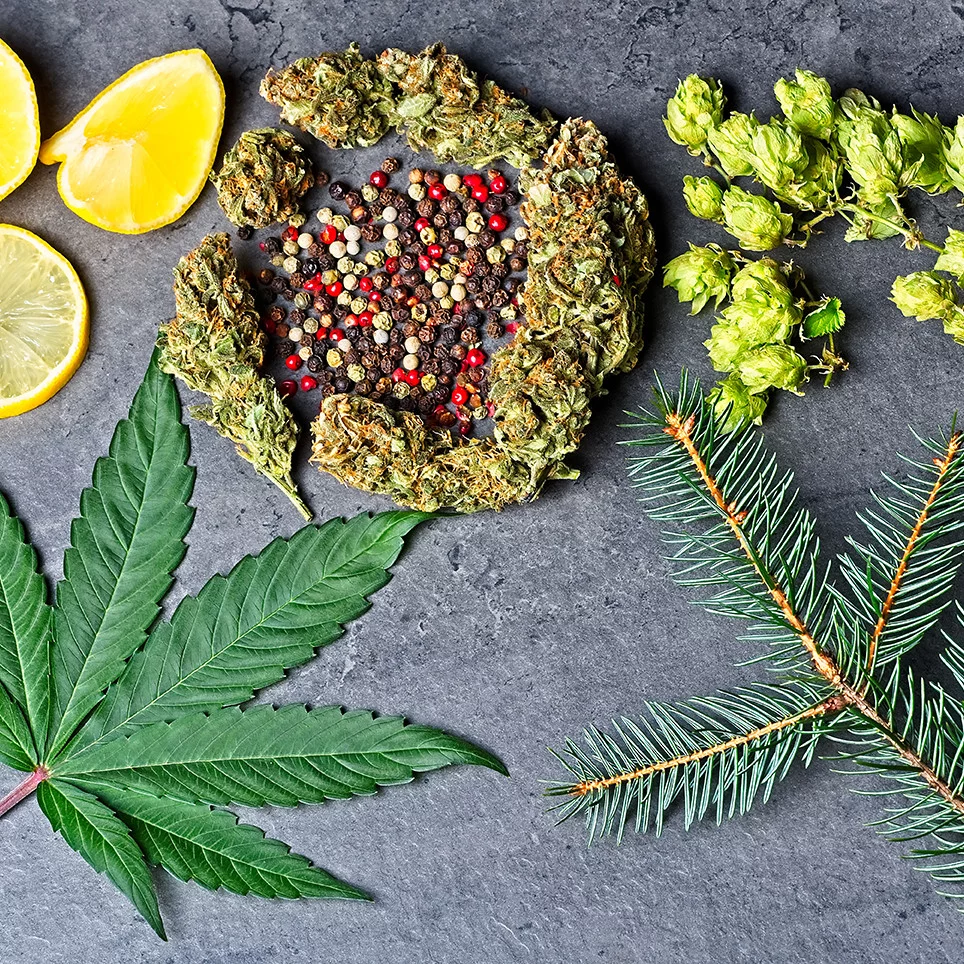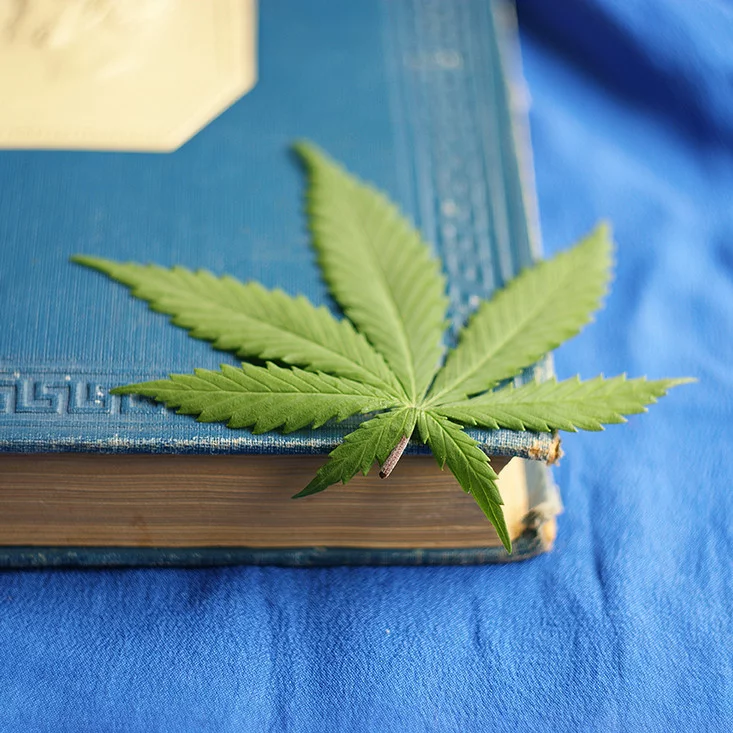Welcome to Ascend Cannabis
We offer a curated selection of the best brands and expert staff to help guide you on your cannabis journey. Order online for pick-up or delivery (in certain locations).
EDUCATION
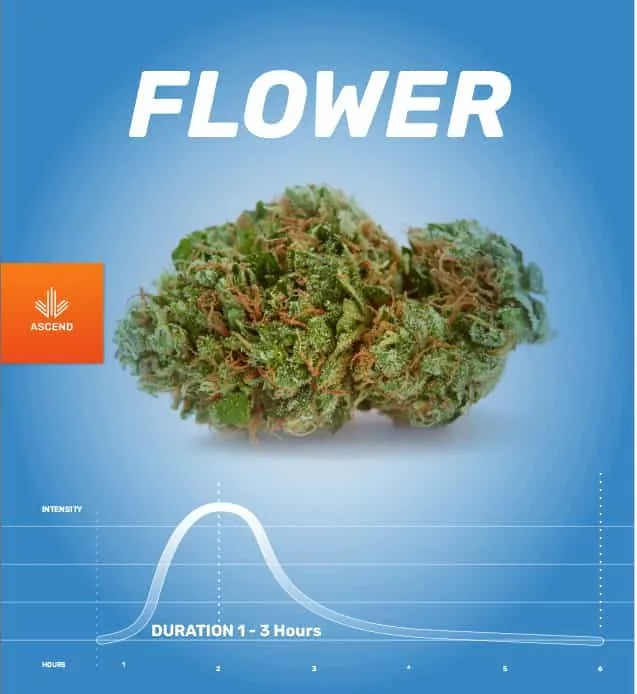
FLOWER
Cannabis flower — the manicured bud of a female cannabis plant — is one of the most popular ways to consume cannabis. There’s a huge variety of unique cannabis flowers — called strains — to choose from, each with their own unique genetic history, flavor, and subtle effect. Variations within strains — called phenotypes — can influence flavor, effect, and physical attributes of the plant (i,e., one pheno could be purple with yellow hairs, the next pheno could be more of a bright green with darker orange hairs.)
In addition to strains, important considerations when shopping for flower include potency (the percentage of cannabinoid content), plant type (indica, sativa, and hybrid) and growing conditions (sun-grown versus indoor-grown). There’s a wide range of flower to fit all tastes and budgets, from top-shelf, designer strains to tried-and-true everyday options. When in doubt, consult your budtender for recommendations.
| Flower is generally smoked in a pipe, water bong or dry herb vaporizer, or rolled into joints. | |
 |
Flower is sold by weight: gram, eighth (3.5 grams), quarter (7 grams), half (14 grams), and ounce (28 grams). |
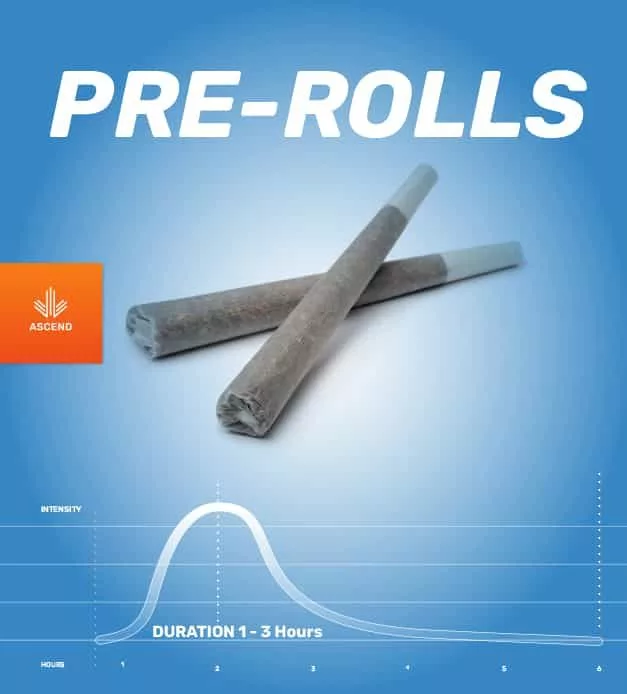
PRE-ROLLS
Pre-rolls, often called joints, are a convenient way to enjoy rolled cannabis flower—without having to roll your own. All you need is a light, and you’re on your way.
Pre-rolls can be purchased as singles or in multi-packs, and like flower, are available in a wide variety of strains, blends, and infusions. Pre-rolls also come in a variety of quality: Some are full nugs, the whole smokeable flower, for a premium taste and burn quality. Some consist of processing extra plant matter or trimmings, called trim, from the plants for a lower quality. And others are a hybrid of both nug and trim.
 |
THC and CBD content varies among different brands and strains, so check the package for details. |
 |
THC and CBD content varies among different brands and strains, so check the package for details. |
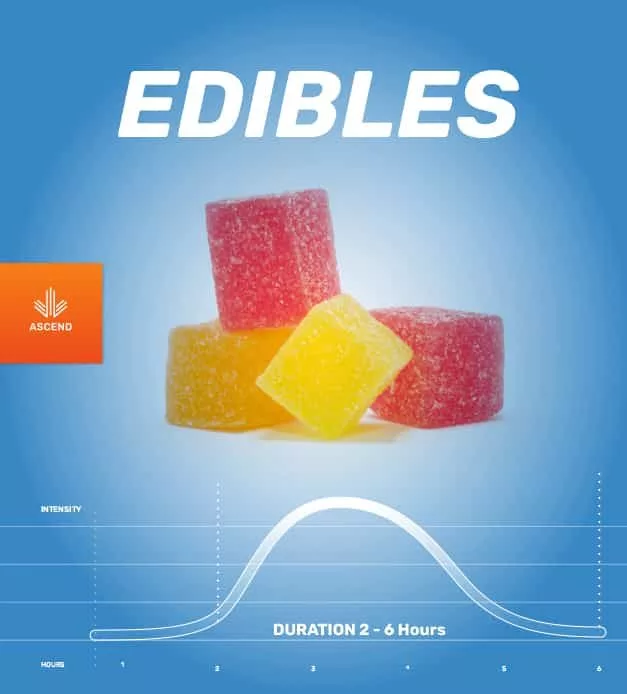
EDIBLES
Edibles are just what they sound like — food and beverages infused with cannabis. A hugely popular and fast-growing segment of cannabis products, edibles are available in a dazzling array of choices, from seltzer and soda-inspired beverages to infused brownies, popcorn, gummies, mints, and more.
Edibles provide an easy and discreet way to consume cannabis, and can sometimes produce a longer and more intense effect than inhaled cannabis. Edibles can often take an hour or more to take effect. New consumers should begin with 5mg or less of THC, and wait two hours to assess the full effect before taking more.
 |
Edibles should be used with caution — it’s best to start low and take it slow, and avoid over-consumption. Effects can intensify when consumed on an empty stomach and can delay on a full stomach. |
 |
Each edibles product is clearly labeled with its THC and CBD content in milligrams, both per package and per serving. |
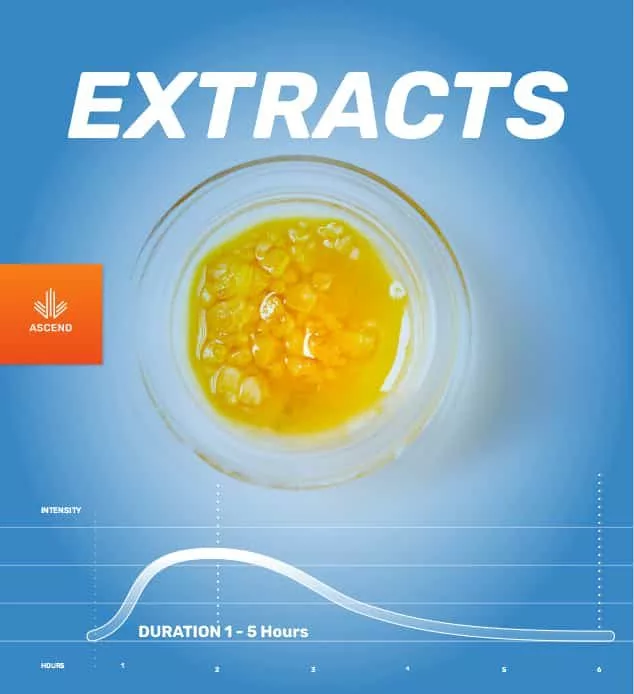
EXTRACTS
Cannabis concentrates are the highly potent extracts from the cannabis flower, made by separating the resin from the flower to extract the maximum amount of cannabinoids, such as THC and CBD. Potency can be several times stronger than regular flower, and the effects of concentrates are felt almost immediately after inhalation. Due to the high potency, concentrates are often reserved for a more experienced cannabis consumer. With concentrates, it’s best to start with a low dose and take it slowly.
 |
Concentrates are usually consumed through a vaporizer device called a “dab rig” that vaporizes the concentrate at very high temperatures (400°F or higher). |
 |
Concentrates come in many different forms including shatter, wax, rosin and sauce. They differ based on the way they are extracted, the part of the plant that’s used for extraction, and what they are extracting from the plant, (i.e. rosin and live resin give you more of the terpene profile than others such as shatter). |
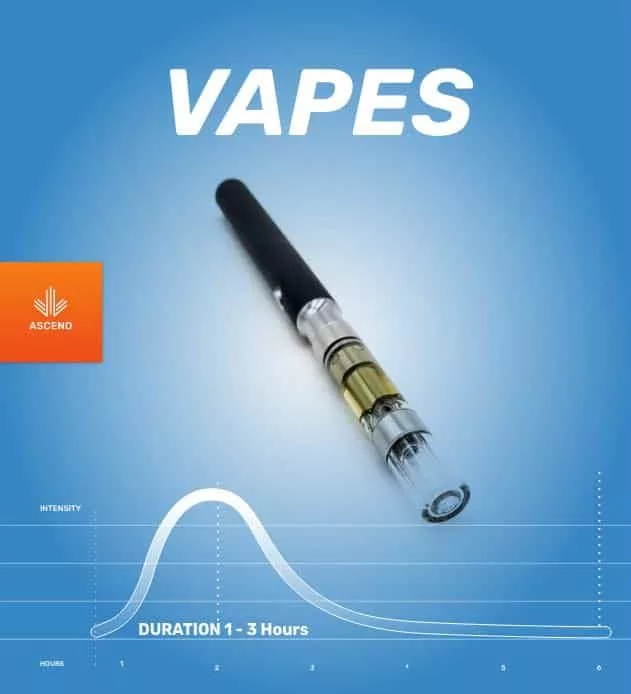
VAPES
Vape pens are a convenient, portable and often discreet way to consume cannabis. Vaping is the process of heating cannabis oil to a temperature hot enough to cause it to vaporize and be inhaled. The effect is immediate and last for a shorter duration than pre-rolls or flower, but without the smoke, ash or distinct odor. Vape products are sold in a wide variety of strains and potencies. THC and CBD levels are listed on the package, usually in percentages or ratios. Vape pens are available in disposable form, or with rechargeable batteries and interchangeable cartridges or “carts.”
 |
Vape pens are an easy way to control your cannabis intake, particularly if you’re interested in microdosing. |
 |
When storing your vape pen, avoid heat and sunlight, which can degrade the oil quality. Also avoid extreme cold temps to prevent malfunction and clogging. |
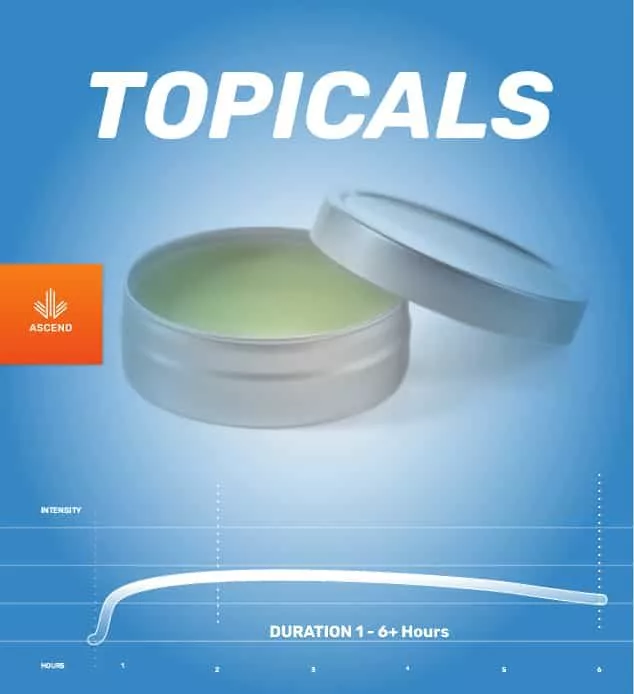
TOPICALS
Topicals are cannabis products that are intended for external use and are applied directly to the skin to target a specific area of discomfort. They come in many textures, aromas and form factors, including balms, lotions, oils, lubricants, transdermal patches and even bath bombs.
Topicals can be an effective way to soothe both the skin and muscles without the intoxicating effects usually associated with more typical ways of consuming cannabis. Simply apply them to your body to localize your CBD and THC experience.
| THC and CBD amounts are usually indicated as a ratio on topical | |
 |
Topical products are sometimes infused with other essential oils to maximize the relief. |
Most cannabis strains can be classified as either Cannabis Sativa or Cannabis Indica – two variations of the same basic species of cannabis. (What’s a cannabis strain, you ask? A “strain” is a genetic variant of cannabis.) Yet, these two classes of strains tend to have very different effects on the consumer—and they can look different, too.
Form and Structure
Indica plants tend to be short and stocky, with broad, chunky leaves. Sativa plants, on the other hand, are tall and lanky, with thin and pointy leaves.
Yet, it’s not always easy to quickly identify the different species solely by their appearances. The variation in form is primarily due to the different geographical regions where each originates: Indicas come from the mountainous regions of Asia and the Middle East, and sativas develop from more equatorial regions around the world.
Knowing how terpenes work are an important part of understanding cannabis—and personalizing your experience. Learning the different terpene profiles is beneficial in helping you identify the potential for therapeutic and psychological effects of cannabis, along with its aroma, flavor and color.
The organic compounds found in terpenes provide different benefits, such as anti-inflammatory or anxiety-reducing properties, for example. Cannabis plants showcase about 40 terpenes each, and a total of 200 have been identified in different strains. This guide will help you better understand how these important parts of the cannabis plant can enhance your overall experience.
What are terpenes?
Terpenes are organic compounds in found in the essential oils of that female cannabis plant that determine each strain’s unique the scent and flavor. They are essential for the plants’ growth and survival by not only producing unique aromas, but also creating the plants’ colors in their buds and leaves. This pigmentation attracts certain creatures to spread pollen—and deters others that could cause harm—all while strengthening the plants’ immune systems.
Terpenes are volatile compounds—organic chemicals that evaporate easily at room temperature—so extraction must occur with extreme care. Three main extraction processes include: solventless (steam or hydro-distillation), solvent (using hydrocarbons and gases) and mechanical (using pressure and heat).
Aroma
The odor of a cannabis sample. The aroma of marijuana is caused by chemical compounds called terpenes. Depending on the exact mix of terpenes (more than 200 have been discovered), samples can produce a skunky, musky, or citrus odor.
Backcross
In cannabis breeding, backcrossing is when a hybrid plant (one that is a mix of indica and sativa) is bred with one of its parents in an effort to create offspring that are closer to the original parent with which the hybrid was bred. Backcrossing is typically performed with the goal of preserving rare strains or enhancing the effects of recessive genes.
BHO (Butane Hash Oil)
An extraction, or concentrate, created by immersing cannabis in a solvent (in this case, butane), resulting in a very potent oil that contains high levels of THC. Also known as “dab,” different varieties of BHO include “honey oil,” “earwax,” and “shatter.” Many different manufacturing processes can be employed to change the consistency and quality of the oil that is derived from this process.
Bud
A reference to the flower of the cannabis plant. Buds contain the most resinous trichomes, the translucent stalk-like structures that manufacture and contain cannabinoids (such as THC, CBD, and CBG). It is the bud of the plant that is most desired and that provides the greatest value to both medical and recreational users alike.






